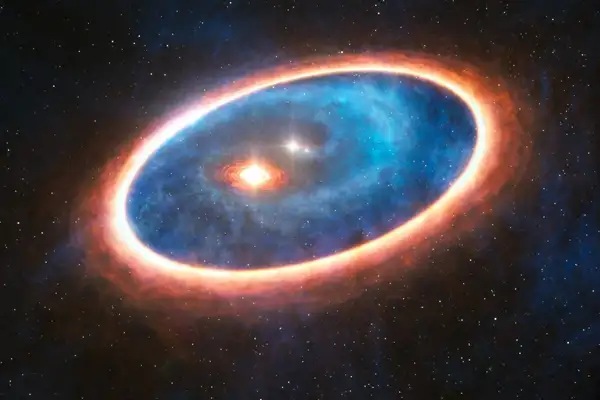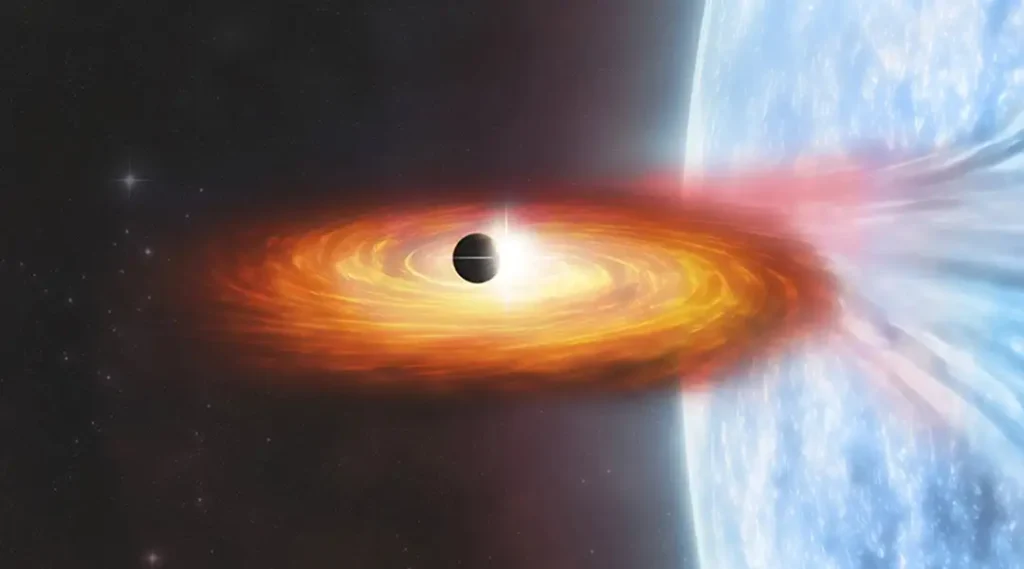X-ray binary star systems, composed of a normal star and a collapsed star emitting X-rays, have been a focal point of recent discoveries, including the MAXI J1820+070 system hosting a black hole.
About the MAXI J1820+070:
- The MAXI J1820+070 is a low-mass X-ray binary system with a black hole as a compact object.
- It was first detected during its outburst in 2018 using the MAXI instrument aboard the International Space Station (ISS).
AstroSat’s Contribution:
- AstroSat, equipped with 3 X-ray payloads and a UV telescope, helped capture soft and hard X-ray emissions and far ultraviolet radiation from MAXI J1820+070.
- AstroSat provided comprehensive insights into the dynamics of the X-ray binary system.
About X-ray binary star systems:
- The X-ray binary star systems are astronomical systems composed of a normal star and a collapsed star, such as a white dwarf, neutron star, or black hole, emitting X-rays.
- These systems are named “X-ray binaries” due to their emission of X-rays.
- The collapsed star in an X-ray binary is referred to as the “compact object.”
- Compact objects in X-ray binaries exhibit strong gravitational forces, which cause them to accrete matter from their companion stars.
- As matter accretes onto the compact object, it emits X-rays due to high temperatures and intense gravitational interactions.
Significance:
- Studying X-ray binary star systems provides valuable insights into the behaviour of compact objects such as black holes and neutron stars.
- These systems serve as laboratories for testing theories of stellar evolution, accretion processes, and high–energy astrophysics.
About AstroSat:
- The AstroSat is India’s first dedicated space astronomy observatory, launched by the Indian Space Research Organisation (ISRO) in 2015, to observe celestial objects in various wavelengths of light, including ultraviolet (UV) and X-rays.
- It is equipped with 5 payloads, including- UV Imaging Telescope (UVIT), Soft X-ray Telescope (SXT), Large Area X-ray Proportional Counter (LAXPC), Cadmium Zinc Telluride Imager (CZTI) and Scanning Sky Monitor (SSM).
Ref: Source
| UPSC IAS Preparation Resources | |
| Current Affairs Analysis | Topperspedia |
| GS Shots | Simply Explained |
| Daily Flash Cards | Daily Quiz |




